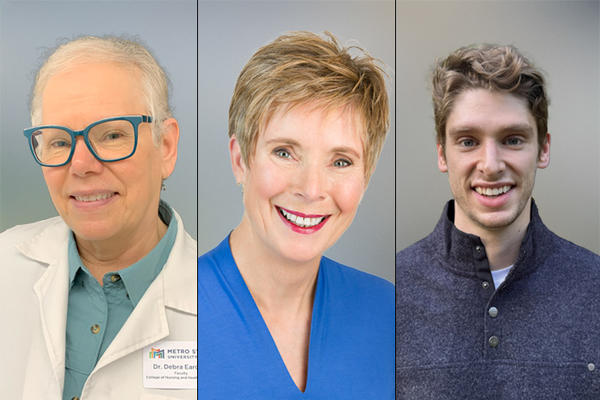New study assesses extent of sexual exploitation among Minnesota youth
January 27, 2020

Minnesota’s first estimate of youth sexual exploitation indicates that at least 5,000 high school-age youth in the state have traded sex in order to receive money, food, drugs, alcohol, a place to stay or something else of value.
The data shows the exploitation of high school students is happening in communities all across Minnesota. Boys and girls are almost evenly impacted.
In hopes of gaining a better understanding of prevalence of sexual exploitation among Minnesota youth, the Minnesota Department of Health added a new question to the 2019 Minnesota Student Survey and partnered with researchers from the University of Minnesota School of Nursing to analyze the data. University of Minnesota researchers arrived at the 5,000-youth estimate based on the state’s youth population combined with results from the question asking 9th and 11th graders whether they had traded sex for something of value. In the 2019 survey, 1.4% of students responded “yes” to the question.
“This alarming study shows there are many young people all across the state who need protection from sexual exploitation,” said Minnesota Commissioner of Health Jan Malcolm. “We must do more to connect with youth through our Safe Harbor program, educational programs and other efforts providing them with financial security and safe homes.”
The analysis also found young people impacted by sexual exploitation have hopes and dreams for their future with 63% saying they wanted to pursue higher education after high school, 17% work or career training, 7% the military and 14% other pursuits.
“I’ve been researching sex trading and trafficking for more than 15 years and the single biggest question I get is how many victims are there, how many people are involved,” said Lauren Martin, associate professor at the University of Minnesota and researcher on the project. “Though this number is likely an underestimate, it provides a critical foundation for how our state will identify, serve, work with and build on the assets and strengths of young people involved in trading sex.”
Martin added that the study likely underestimates the number of exploited youth because of possible student reluctance to answer the question “yes,” and the student survey only counts those who attend school and those at school on a given day. Youth who are not in school are more likely to face sexual exploitation. Trading sex can be a way to meet basic needs such as food and shelter, and it makes young people more vulnerable to sex trafficking.
Some groups of young people were more likely to be affected by trading sex and sexual exploitation, according to the survey. For example, youth in juvenile correctional facilities, foster care and unstable housing all reported higher levels of sexual exploitation. Youth of all gender identities and races reported sexual exploitation.
“If we can identify these young people in school who are at risk of trading sex, caring adults such as school nurses, social workers and teachers can intervene and help with services and support so that they can get out of that risky situation,” said Barbara McMorris, associate professor at the University of Minnesota.
Minnesota has been a national leader in responding to the needs of sexually exploited youth. Minnesota’s Safe Harbor program is a multi-agency statewide initiative designed to meet the needs of sex-trafficked and sexually exploited young people through age 24. Safe Harbor works to give young people the tools they need – housing, education and support from trusted adults – to leave sexual exploitation and human trafficking and live healthy lives.
Between April 2017 and March 2019, Safe Harbor grantees served 1,279 youth and young adults.
“Safe Harbor is a great resource helping survivors find hope and help but this research shows we need to do more to identify and connect with those young people we currently aren’t reaching,” said Beatriz Menanteau, supervisor of the MDH Violence Prevention Programs Unit.
If you or someone you know is sexually exploited or taken advantage of, help is available. Visit the Safe Harbor Minnesota webpage. You may also call the Day One Hotline at 1-866-223-1111.
In addition, Safe Harbor has been partnering with community partners across the state, such as the YMCA, to train trainers in the Not A #Number program, a child trafficking and exploitation prevention curriculum designed for youth. If you are interested in learning more about these youth-oriented trainings, please contact Health.safeharbor@state.mn.us.
The study, Trading Sex and Sexual Exploitation among High School Students: Data from the 2019 Minnesota Student Survey, was conducted by researchers at the University of Minnesota’s School of Nursing, School of Social Work and Medical School. The project was funded by the Women’s Foundation of Minnesota.


